Norwegian Forest Cat vs Turkish Angora: Everything You Need to Know
Being a fan of medium to large cats is not easy! Most of them are fluffy, long-haired, and great as family pets. Two of which you might end up confusing as another breed would be the Norwegian Forest Cat and the Turkish Angora. They both seem to share a striking appearance and features which can be sometimes hard to distinguish.
If you plan to get a new cat, exploring all details about the breed is a primary step and this article would be the perfect start on your journey as a cat parent. Let’s dive in!
Table of Contents
Breed Origins
Norwegian Forest Cat


Norway has hailed the Norwegian Forest Cat as its official cat breed! It is believed that this feline arrived in Norway hundreds to thousands of years ago. He has been a favorite animal subject to several mythological tales which shows the fondness of Norwegian folks to the said cat.
In the year 1938, he was first featured in a cat show in Oslo which drew a lot of attention from the public eye. The “Skogkatt” which translates to “Forest Cat” encouraged fanciers to form the Norwegian Forest Cat Club but the plan to further develop this breed was temporarily halted during World War II.
The Wegie almost got extinct when crossbreeding came out of hand, but thankfully, the said club strived harder to preserve the purity of the breed. The year 1977 was the start of the Norwegian Cat’s recognition to various prestigious clubs and organizations until he eventually attained full championship status in 1993.
Turkish Angora
What’s so uncommon about the Turkish Angora is that, unlike other cat breeds that emerged due to human effort, this one has rather occurred naturally. He originated in Turkey hence the name and the arrival were estimated around the 15th century.
People speculate this breed to be a descendant of the African wild cat but eventually grew a longer hair coat as a means to adapt to the harsh cold climate of Angora.
Since written documents show that this cat has reached Great Britain and France sometime after the 15 century, this highly insinuates that he may have been around earlier.
Nevertheless, the breed has participated in cat shows in the 19th century, but crossbreeding became so rampant that the Turkish Angora’s line almost diminished. Turkey immediately set an action to prevent the pure bloodline from disappearing and when it thrived, American servicemen in the 1950s got to witness the splendor of it. They successfully brought back home a couple although the breeding program was hesitant at first.
Size, Appearance, & Coloring
Norwegian Forest Cat


Males are genetically larger than the female Wegies, but they all are generally large. Their bodies are muscular and are covered with a full coat of long fur that makes them even more sizable.
The range of their masses is ideally anywhere between 12 to 16 pounds and can be 9-12 inches in height when measured from shoulders down to their paws. Since this cat breed has fully adjusted to the winter climate of his place of origin, the coat has developed into a water-resistant and silky-to-the-touch covering with a woolly undercoat.
Various shades of colors are also available when you get the Norwegian Forest breed. Check out the table below to see the shades as well as the possible patterns he can be born with:
| Color | Pattern |
| White | Tortoiseshell |
| Black | Calico |
| Blue | Tabby Fur |
| Red | Solid |
| Cream | Bi-color |
| Silver | — |
| Golden | — |
Fascinatingly enough, the eyes can either be gold, copper, green, or a combination of all three.
Turkish Angora
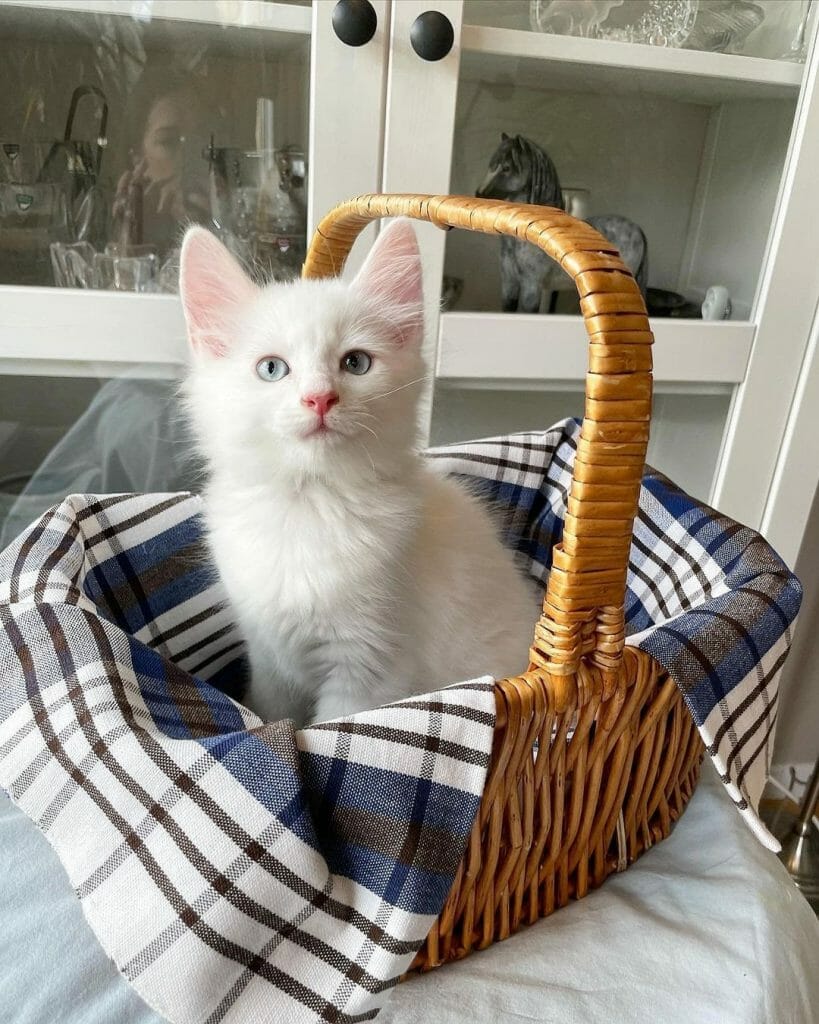

The Turkish Angora’s statistics aren’t far from the Norwegian Forest Cat. He is 9-14 inches in height and can be 8 to 15 pounds heavy. Despite that small difference, he’s labeled as a medium-sized tabby.
Commonly, people would describe the breed as slender and angel-like. Delicate features come perfectly into place making him look dignified and graceful. There is a contrast between Turkish Angoras from the zoo and the ones which were no longer part of the breeding program. The cats from the zoo are more robust and substantially built.
What you see regarding his fur is most likely how you’ll feel it. The coat is soft, long, and can be in various shades and patterns which are:
| Color | Pattern |
| Black | Bi-color |
| Red | Tortoiseshell |
| Grey | Tabby |
| Brown | — |
As for the eyes, the breed is famed for its high chances of having heterochromia. They all may sport amber, blue, and green with instances of blue and green eye color pairs.
Temperament
Norwegian Forest Cat
The Norwegian Forest cat will shower you with lots of love, but won’t demand yours in return. He has a striking resemblance to the Siberian Cat and the Maine Coon Cat which some experts believe to be a descendant of the Wegie. Anyhow, the ideal temperament of this feline is packaged to be friendly and calm.
It also seems that aside from excellently adapting to temperature, this cat breed finds it easy to adapt to different lifestyles and families as well. However, they remain suited for families who are abundant in warmth and affection. Wegies also love the company of kids and other pets, so if you have a dog, the likelihood of them having a cold war is low.
Cuddling is his favorite pastime activity with his favorite family member, but he won’t forever stay in your lap. Due to his coat, if his body temperature rises, he will occasionally leap off of you and find a space or a corner to cool off.
Turkish Angora
Social in nature, the Turkish Angora loves to be around his family! He would typically choose one member to be closest with and most often, he’ll want to be with his favorite human all the time. It is no surprise if the Turkish Angora displays dominance in your household, but this shouldn’t worry you at all. Dogs and other pets won’t be treated as enemies by this dignified feline.
Additionally, exhibiting dominance and putting himself intentionally on the top of the hierarchy should also mean getting to see his kingdom from a bird’s eye view. Providing him with a cat tower will help him enjoy the view, but if none is available, he’ll climb to your highest bookshelf, determined to oversee his surroundings.
Trainability & Intelligence Level
Norwegian Forest Cat
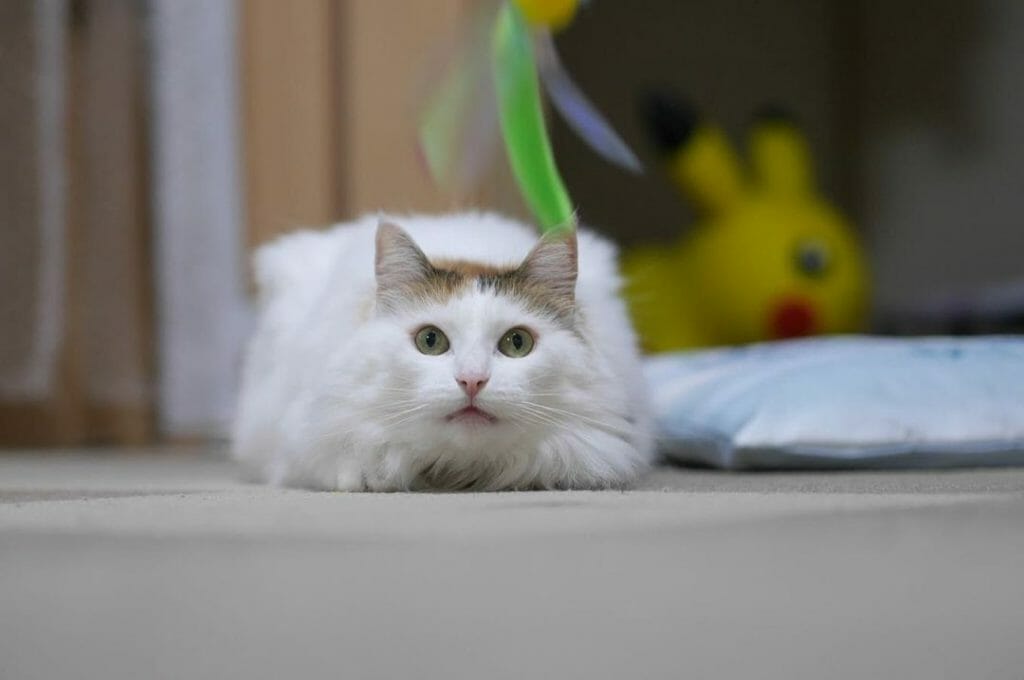

It is not uncommon for the Norwegian Forest Cat to display a dog-like personality. Aside from being naturally friendly, he’s also highly inquisitive and intelligent.
You won’t find it hard to house-train this cat breed. His eager-to-please cattitude will play a big role in teaching him essential house rules. Useful behaviors and simple tricks can be learned well by this fluffy and innocent-looking feline!
Turkish Angora
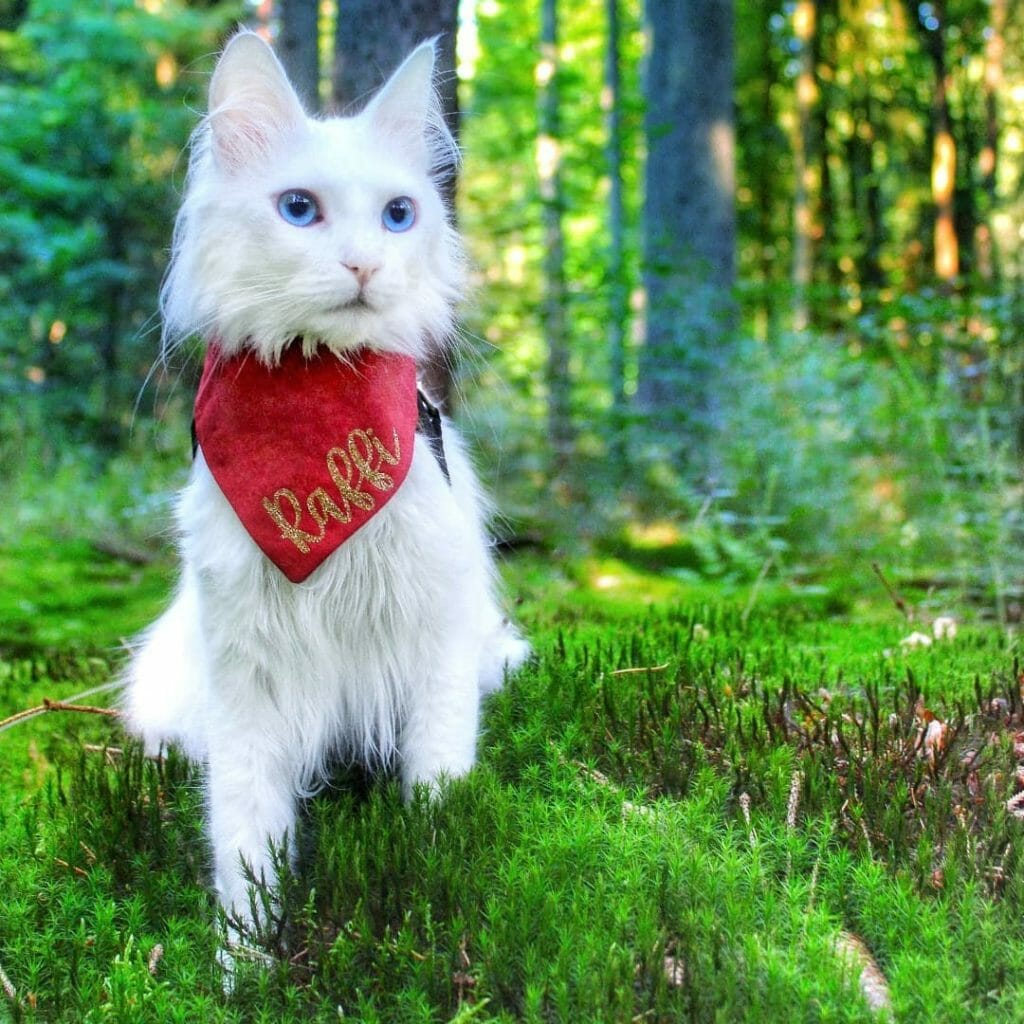

In so many ways, you’re never wrong to perceive this cat as smart. The Turkish Angora loves to play a lot, therefore, should you train him in certain tricks or teach him useful house rules, making each session appear like a game will make your cat pick lessons up in an instant.
However, one thing that you should consider when training such a cat, is his deafness. This is a trait common to the line. Using gestures or giving commands in a louder voice will aid him in knowing what you want him to do. Thankfully, since this breed is developing, the frequency of deafness is shrinking.
Exercise Needs
Norwegian Forest Cat
Unlike dogs, you won’t have to take this cat out for a daily walk. Rather, providing him play areas where he can practice his hunting skills or let out his prey drive will suffice in keeping him physically and mentally vitalized.
A spacious room for him to run around is ideal. Various toys such as the MeoHui Interactive Feather Toy will keep him engaged and this will also promote a stronger bond between you and your feline. Of course, you have to be careful when using tools to avoid unnecessary vet visits such as if your cat ends up swallowing objects.
Turkish Angora
Known to be independent, the Turkish Angora can release pent-up energy even if he’s all by himself. Simply provide him a room free from clutter so he can run without constantly knocking on various items. If you have time to accompany him in sweating-off, allocate at least 15 to 30 minutes daily with him.
Investing in good-quality cat toys will help him as well instead of freeing him in a yard to catch poor squirrels. Many cat owners highly recommend Dreamsoule’s Cat Bed Play Tunnel which is a 2-in-1 toy, convenient, cozy, and fun! Your cat will no longer end up sleeping in your bed because he’ll surely fall in love with his own space.
Grooming Requirements
Norwegian Forest Cat
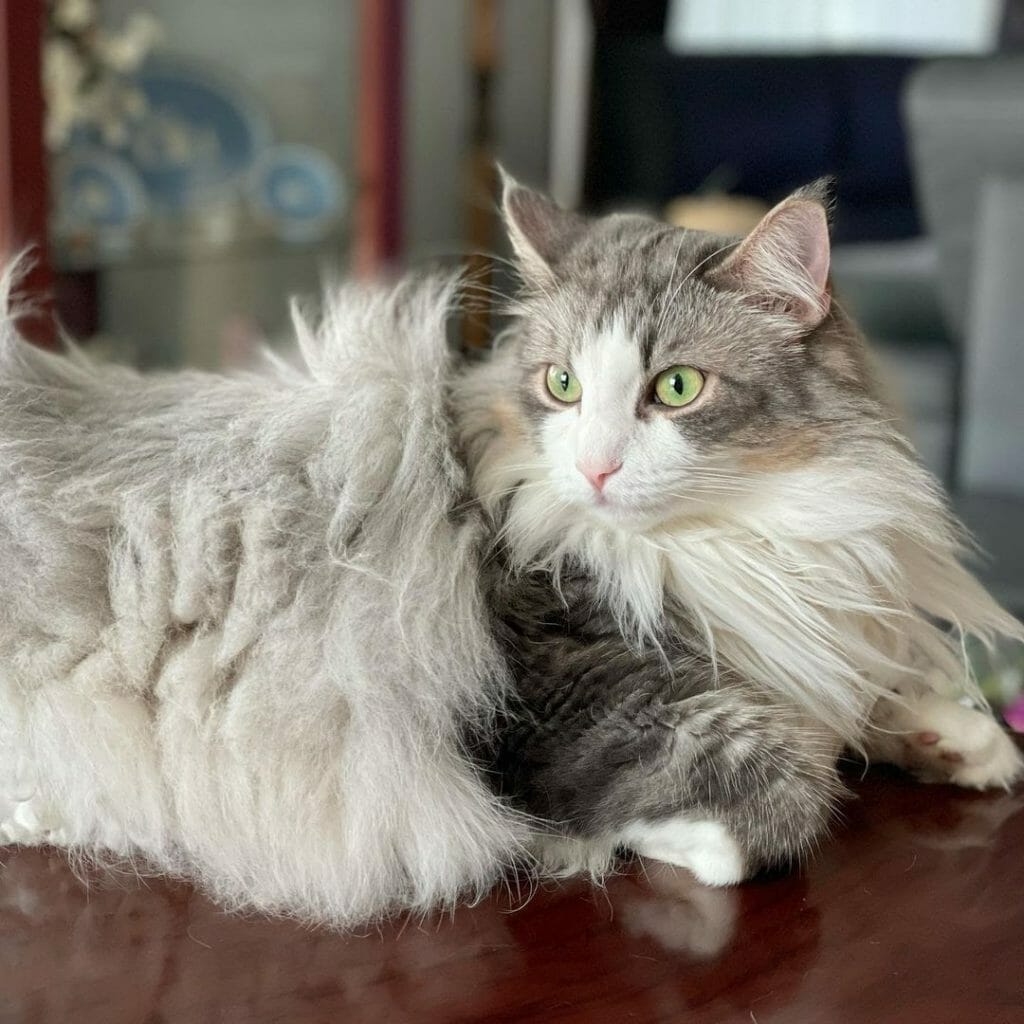

The Norwegian Forest cat would require lots of grooming. His thick, long hair is enough to tell you that he would need a daily brush unless you want to become a frequent pet salon customer. Moreover, the greatest benefit of doing this regularly is to prevent his coat from matting which can be painful if it gets worse.
During the winter season, the Wegie’s coat will grow thicker. When the summer months arrive, he’ll shed a significant amount, so groom him more often than you would during the regular seasons. As part of the pampering, trim his nails but never declaw. Check his ears for any signs of infection as well.
Turkish Angora
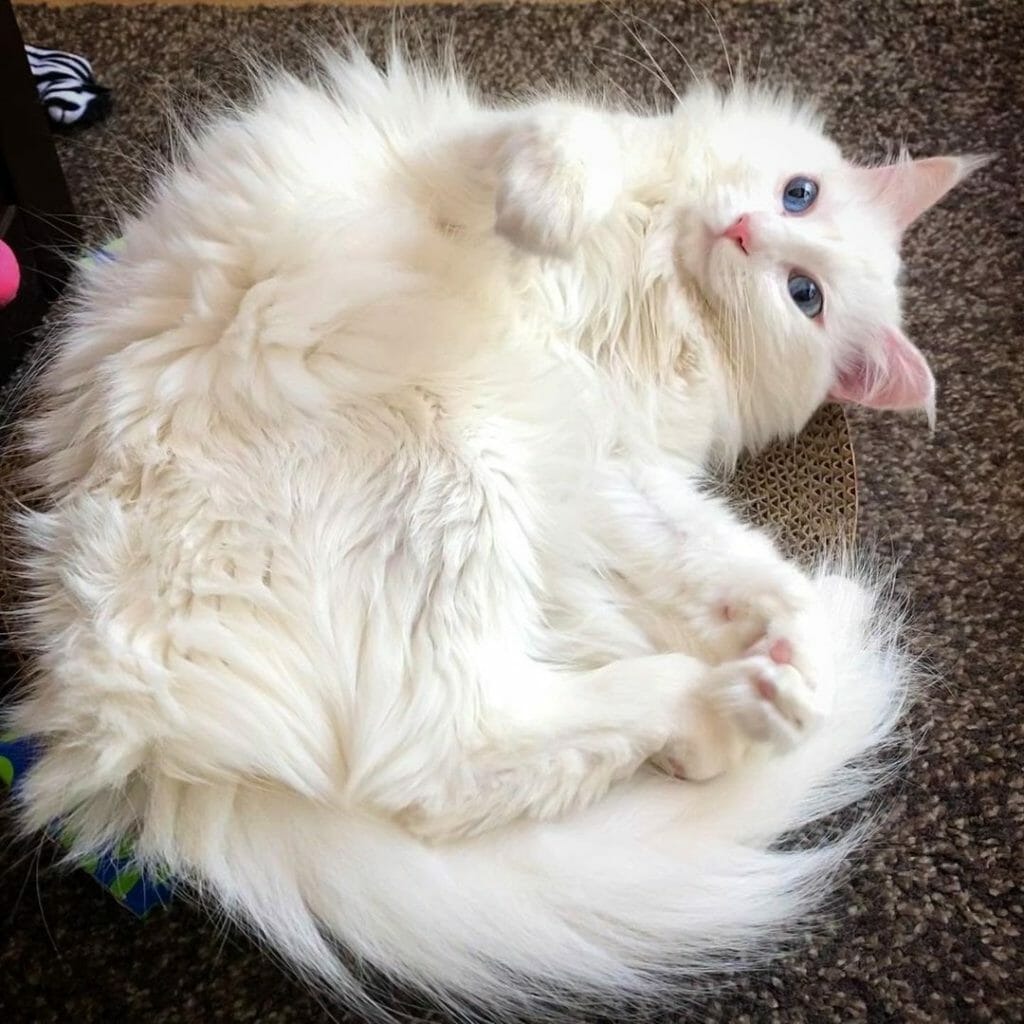

The absence of the undercoat makes the Turkish Angora easier to handle than the Wegie. That means, brushing him twice or thrice per week is enough to control his hair fall.
Take note that his hair will continue to grow until he’s 2 years old. Be a more involved cat parent the more he matures to prevent mats and reduce excess hair. Additionally, since his hair is long, dirt might get collected around his eyes which can cause infections, so check the area often.
Health Issues
Norwegian Forest Cat
This natural breed is sure to dodge most health concerns most mixed breed cats may experience. This doesn’t mean that he’s free from having medical conditions, however. Some of these which you can determine through DNA tests are:
- Hypertrophic Cardiomyopathy
- Hip Dysplasia
- Glycogen storage disease
Turkish Angora
There is not one cat breed that is perfectly free from health concerns. The Turkish Angora included, is susceptible to various conditions which can be the result of genetics or lifestyle.
- Panleukopenia
- Rhinotracheitis
- Deafness
Cost per Kitten
Norwegian Forest Cat
Adoption: $75-$100
Reputable Breeder: $800-$1,500
Turkish Angora
Adoption: $75-$150
Reputable Breeder: $900-$3,000
Fun Facts
Norwegian Forest Cat
- They are highly popular and common in Europe.
- Due to how his coat is built, the Wegie can survive living outdoors.
- Although he’s believed to be an old breed, he only got recognized in modern times.
Turkish Angora
- This domestic cat is an excellent swimmer!
- Old Turkish Angoras often retain their high-spiritedness.
- The breed is said to have been brought to Europe by the Vikings.
Which Cat Should You Get?
Based on appearance, both cats look the same. The Wegie, however, is larger than the Turkish Angora. In terms of maintenance, the Turkish cat is easier to manage since he doesn’t have an undercoat, unlike the Norwegian feline. There’s not much difference regarding exercise needs, but when it comes to personality, the Turkish Angora seems to be more dominant.
Whichever you prefer, both longhaired cats are great options if you’re looking for a lifelong house cat companion.
